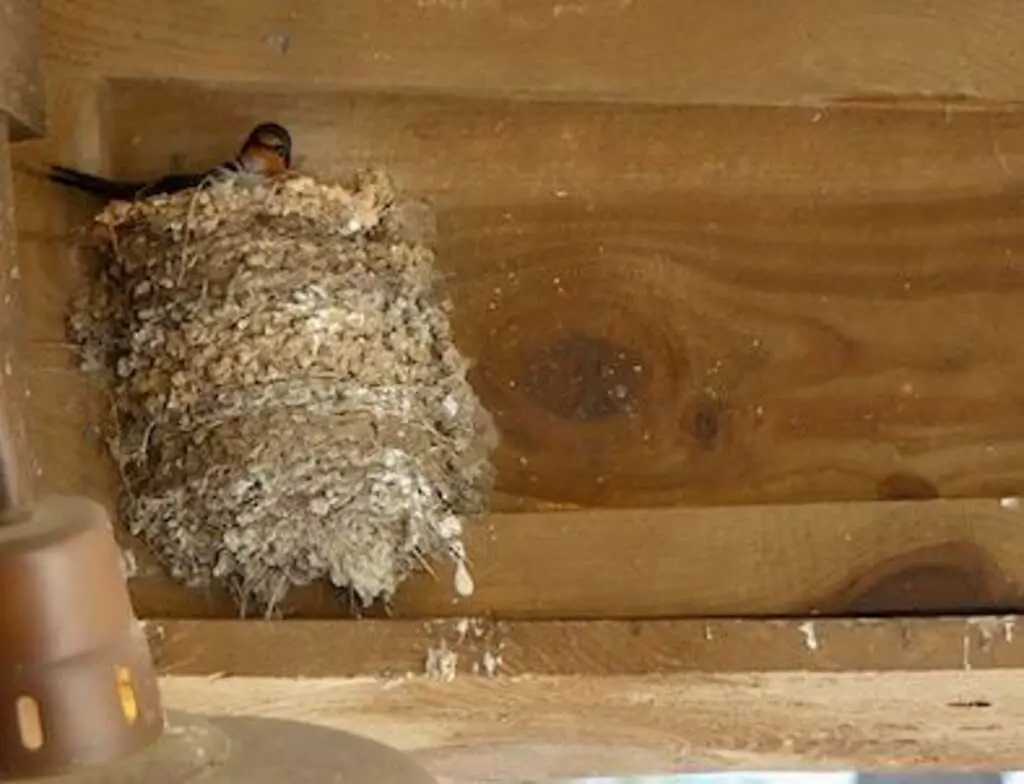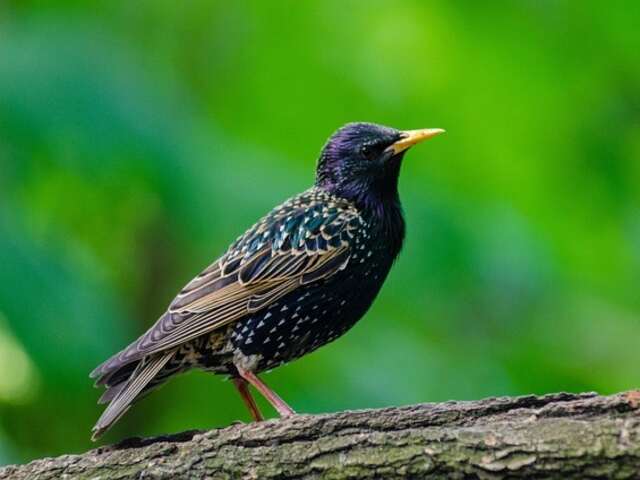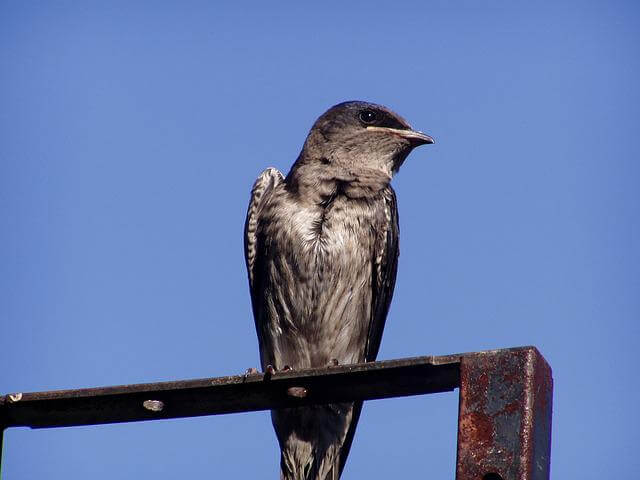Birds can cause significant damage to barns and pose a threat to the health and safety of livestock. For instance, pigeons can carry diseases such as salmonella, histoplasmosis, and ornithosis, which can spread to other animals and humans.
Moreover, their droppings can be corrosive, leading to structural damage to the barn’s roof and walls.
To protect the barn from birds, farmers and livestock owners rely on various methods, including physical barriers, visual and sound deterrents, food and water management, and physical traps.
In this article, we will discuss these methods in detail to help farmers and livestock owners keep birds out of their barns.
Whether you have a small hobby farm or a large commercial operation, these tips are essential to safeguard your property, protect your livestock, and maintain a healthy environment.
Table of Contents
- 1 How To Keep Birds Out Of A Barn?
- 1.1 Physical Barriers
- 1.2 Bird Netting
- 1.3 Wire Mesh
- 1.4 Visual Deterrents
- 1.5 Bird Scare Tape
- 1.6 Reflective Objects
- 1.7 Sound Deterrents
- 1.8 Predatory Bird Calls
- 1.9 Ultrasonic Devices
- 1.10 Food Management
- 1.11 Secure Food Sources
- 1.12 Water Management
- 1.13 Mask Water Access
- 1.14 Bird Repellent Gels
- 1.15 Selecting Gel Products
- 1.16 Applying Repellent Gel
- 1.17 Physical Traps
- 1.18 Live Traps and Baits
- 1.19 Ethical Release of Captured Birds
- 2 Frequently Asked Questions
- 2.1 How do I determine which bird repellent gel to use for my specific bird problem?
- 2.2 Can I use multiple visual deterrents in one area to increase effectiveness?
- 2.3 Is it possible to use ultrasonic devices in a barn with livestock present?
- 2.4 Are there any potential health risks to using physical traps for birds?
- 2.5 How can I ensure that released birds are not harmed or injured after being captured in a live trap?
- 3 Conclusion
- 4 Author
How To Keep Birds Out Of A Barn?
Physical Barriers
The implementation of physical barriers in a barn setting necessitates the installation of structural impediments that effectively obstruct avian ingress, thereby creating an environment that is impervious to the intrusion of feathered creatures.
Types of barriers include wire mesh, bird spikes, and electric fencing, depending on the level of protection needed and the size of birds that need to be kept out.
Installation techniques vary, with some barriers requiring professional installation while others can be installed by the barn owner.
Cost analysis should be considered when selecting a barrier, as some options may be more expensive than others.
Maintenance tips include regular inspections for signs of damage or wear, as well as cleaning to prevent buildup of debris or droppings.
Common mistakes in barrier installation include improper anchoring or placement, which can render the barrier ineffective.
Bird netting is a popular and effective option for keeping birds out of a barn, and will be discussed in the next section.
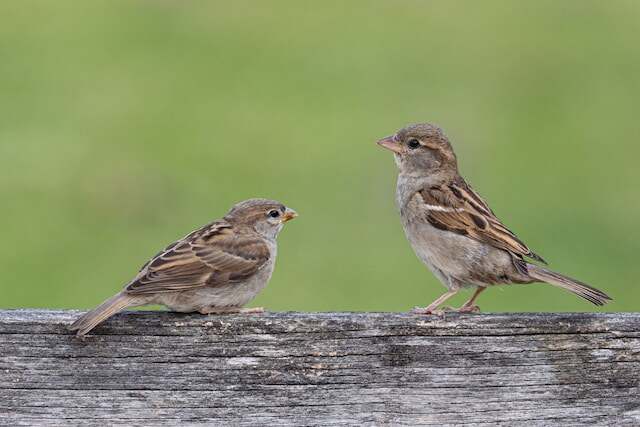
Bird Netting
One effective method for preventing avian ingress into an enclosed agricultural space is the installation of bird netting, which physically bars birds from entering the area while still allowing for proper ventilation and air flow.
Installation tips for bird netting include ensuring that the netting is taut and properly secured to prevent birds from getting caught or tangled.
Cost analysis should also be considered, as bird netting can be more expensive than other methods of bird control.
However, the maintenance requirements for bird netting are relatively low, and the durability of the netting can be compared to other methods of bird control.
Additionally, bird netting can be customized to fit the size of the barn or agricultural space.
Transitioning to the subsequent section about wire mesh, it is important to note that while bird netting is effective, wire mesh may be a more suitable option for smaller openings or areas where birds may be more persistent.
Wire Mesh
Wire mesh can be a practical alternative to bird netting in areas with smaller openings or where birds may be more persistent, as it provides a physical barrier that is both durable and cost-effective while allowing for proper ventilation and air flow.
There are several wire mesh alternatives available, such as stainless steel, galvanized, and plastic-coated, each with their own unique characteristics.
DIY wire mesh installation is relatively easy, and there are several online tutorials available that provide step-by-step instructions.
It is important to note that wire mesh maintenance is crucial to ensure its durability, and regular checks should be done to ensure that there are no holes or gaps that birds can enter through.
Additionally, aesthetics should also be considered when selecting wire mesh, as it can be visible and impact the overall appearance of the barn.
While wire mesh can be an effective means of bird control, it may not be suitable for all situations. In the next section, we will explore the use of visual deterrents as another method of keeping birds out of a barn.
Visual Deterrents
Visual deterrents can effectively discourage birds from entering a barn, providing a humane and non-invasive solution that can protect both the property and the animals inside.
Color psychology plays a significant role in the design of visual repellents. For example, birds perceive the color red as a sign of danger and aggression, making it an effective color to use in visual deterrents.
Scarecrows have been a traditional visual deterrent for centuries and can still be effective when placed correctly. Bird decoys, such as owls or hawks, can also be used to create the illusion of a predator presence.
Motion sensors can be incorporated into visual repellent design to trigger a sudden movement, creating the impression of danger and scaring birds away.
It is important to remember that birds can become habituated to visual deterrents, so it is essential to change their placement and design periodically to maintain their effectiveness.
In the next section, we will discuss another visual solution, bird scare tape, which can be used in conjunction with other visual deterrents to achieve optimal results.
Bird Scare Tape
Bird scare tape is a simple yet effective tool that can be incorporated into a multi-faceted bird control plan, acting as a visual alarm clock that startles birds awake from their comfort zone like a rooster’s crow at dawn.
The tape is made of reflective material that creates a flashing effect when exposed to sunlight, appearing like a predator’s eyes.
The benefits of bird scare tape include its low cost and easy installation techniques, making it an ideal solution for large barns or warehouses.
However, it has limitations, including its weather resistance and long-term effectiveness.
Bird scare tape may need to be replaced frequently, particularly in areas with extreme weather conditions.
It is important to consider cost comparison and weigh the benefits and limitations when selecting a bird control method.
In the next section, we will discuss reflective objects as another option for bird control.
Reflective Objects
While bird scare tape has proven to be an effective method in deterring birds, reflective objects provide an alternative decorative option that can be used to keep birds out of a barn.
These objects, such as mirrors, CDs, and shiny metal surfaces, create a visual distraction for birds and can be placed strategically around the barn to deter them from entering.
It is important to note that effective placement is key, as common mistakes may include placing too few reflective objects or placing them in areas where they do not catch the light.
DIY solutions can be cost-effective alternatives, and creative placement of reflective objects can add an aesthetically pleasing touch to the barn while also serving the practical purpose of bird control.
Moving forward, it is important to consider sound deterrents as the next step in preventing birds from entering the barn.
Sound Deterrents
The use of sound deterrents can be an effective method for preventing avian intrusion in agricultural facilities.
Noise makers, sonic deterrents, audio repellents, acoustic devices, and bird distress calls are all examples of sound deterrents that can be used to keep birds out of a barn.
These devices emit sounds that are unpleasant to birds, causing them to avoid the area. Bird distress calls, for example, mimic the sounds of distressed birds, signaling to other birds that the area is unsafe.
In addition, some sound deterrents can be programmed to emit different sounds at different times, preventing birds from becoming accustomed to a single noise.
However, it is important to note that sound deterrents may not be effective for all bird species and may also disturb nearby human and animal populations.
As such, it is important to consider the potential impact on the local ecosystem before implementing these devices.
Predatory bird calls can also be used as a deterrent, and will be discussed in the subsequent section.
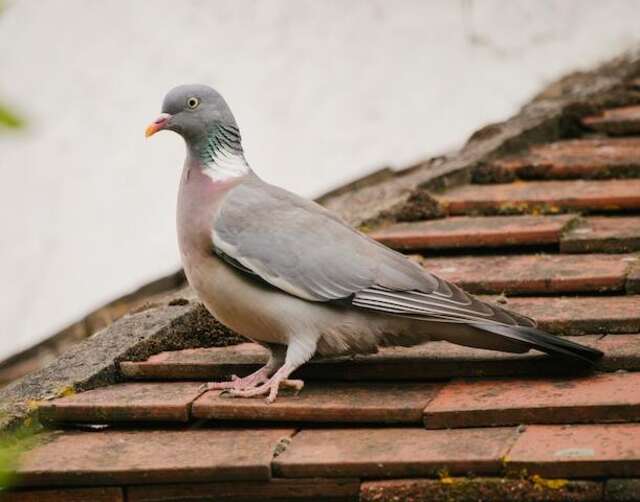
Predatory Bird Calls
While sound deterrents can be effective in keeping birds away from barns, using predatory bird calls as a means of scaring off birds requires careful consideration.
It is important to understand the science behind bird behavior and the types of birds that are most likely to be deterred by this method.
When using predatory bird calls, it is essential to use them correctly and at the appropriate frequency to achieve the desired results.
However, the question remains: are predatory bird calls a humane way to keep birds away?
While it is not physically harmful to the birds, it can cause stress and anxiety, which can be detrimental to their overall health.
It is also important to note that predatory bird calls may only be effective for certain species of birds and may not work for others.
Despite this, many farmers and researchers have found success in using this method to deter birds from their barns.
Moving forward, the next subtopic will explore the use of ultrasonic devices as a bird deterrent.
Ultrasonic Devices
Ultrasonic devices have been proposed as a potential solution for deterring birds from entering barns, and their effectiveness in this regard has been a subject of investigation.
While some proponents of ultrasonic technology suggest that it is a humane and environmentally friendly way to repel birds, there is still a debate about their effectiveness.
Some studies have shown that birds can quickly habituate to the sounds and learn to ignore them.
Additionally, the effectiveness of ultrasonic devices can be limited by factors such as room size and layout, as well as interference from other sounds.
Furthermore, the environmental impact of ultrasonic technology is still unclear, as these devices emit high-frequency sounds that may have unintended consequences on other animals and ecosystems.
Alternative solutions, such as physical barriers and visual deterrents, may be more effective and less costly, especially in the long term.
When considering ultrasonic devices, cost considerations should also be taken into account, as these devices can be expensive to purchase and maintain.
Overall, while ultrasonic devices may offer a potential solution to keeping birds out of a barn, their effectiveness and environmental impact should be carefully evaluated before implementing them.
In the subsequent section about food management, we will explore additional measures that can be taken to keep birds out of a barn.
Food Management
Effective food management strategies are essential for minimizing the attraction of avian pests to agricultural facilities.
Proper food storage, feeding schedules, pest control, hygiene management, and waste disposal are crucial components of effective food management.
To prevent birds from becoming attracted to the barn, storing food in a secure location or container is important.
Establishing feeding schedules and limiting the amount of food available at any given time is also necessary.
Proper hygiene management, such as cleaning up spills and disposing of waste, will discourage birds from foraging for food.
By implementing these food management strategies, the likelihood of bird infestations in the barn can be significantly reduced.
Additionally, secure food sources are an essential part of bird control, which will be discussed further in the subsequent section.
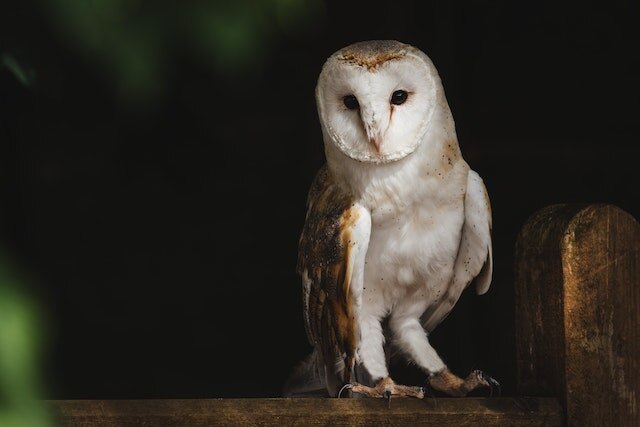
Secure Food Sources
The implementation of measures to ensure the safety and protection of food sources is a key element in the management of bird infestations in agricultural facilities.
Preventing contamination is essential to prevent disease outbreaks and maintain the quality of the food.
Proper storage of grains and other food items, as well as regular cleaning of storage areas, can help prevent the accumulation of debris that can attract birds.
In addition to bird control, rodent control is also important, as rats and mice can also contaminate food sources.
Regular pest inspections can help identify potential issues and prevent infestations. By securing food sources, farmers can prevent birds from accessing them and reduce the risk of damage and disease.
In the next section, we will discuss how to mask water access to further reduce the attractiveness of the barn to birds.
Water Management
To further prevent birds from entering a barn, water management is also crucial.
Water conservation techniques such as pond management, irrigation techniques, and drought prevention can help reduce the amount of standing water that may attract birds.
Additionally, water recycling can be implemented to reduce the need for fresh water sources.
Proper water management not only helps prevent bird infestations but also promotes sustainability and environmental responsibility.
However, if water access cannot be completely eliminated, masking water access can be an effective solution.
Mask Water Access
Masking water access is a practical and efficient method in preventing bird infestations within barns, promoting sustainable water management practices.
Water masking techniques involve preventing water access by implementing waterproof barriers, such as sealing cracks and holes, and using water repellant sprays on surfaces where birds tend to perch.
Another key aspect of water management is bird bath management, as birds need a source of water to survive and thrive.
By eliminating standing water and providing a consistent and controlled water source, birds are less likely to seek out other water sources in and around the barn.
In addition to preventing bird infestations, proper water management can also prevent the spread of disease and improve overall hygiene in the barn.
The next step in deterring birds from barns is to explore the use of bird repellent gels, which provide a non-lethal option for discouraging birds from nesting and roosting in unwanted areas.
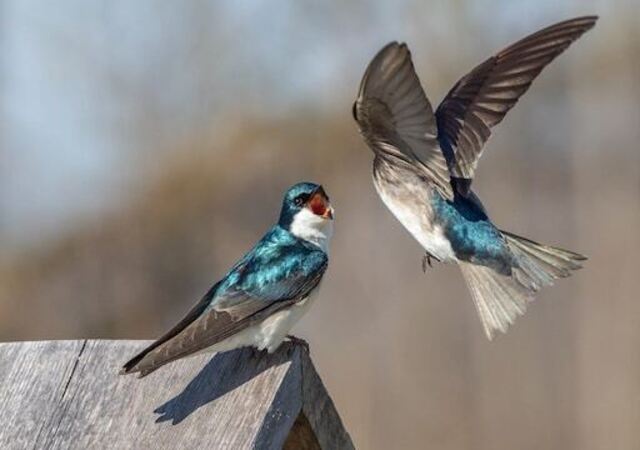
Bird Repellent Gels
Bird repellent gels offer a humane and effective solution for deterring avian pests from occupying unwanted areas, providing a sense of relief and security for farmers and animal caretakers who seek to maintain a clean and safe environment for their livestock.
The benefits of bird repellent gels include their long-lasting effectiveness, versatility in application, and ability to deter a wide range of bird species.
However, choosing the right gel product is crucial for ensuring its effectiveness, which depends on factors such as the type of surface it will be applied to, the size and behavior of the targeted bird species, and the level of infestation.
Gel-based solutions are available for different bird species, such as pigeons, sparrows, and seagulls, and can be applied on various surfaces, including roofs, ledges, and beams.
Applying gel on different surfaces requires careful attention to ensure that it is properly spread and remains effective for a longer period.
Proper application and regular maintenance are necessary to ensure the long-term effectiveness of repellent gels.
The subsequent section will discuss how to select the right gel products for a specific bird problem.
Selecting Gel Products
Choosing the appropriate bird repellent gel product is a crucial step in effectively deterring avian pests from occupying unwanted areas, and requires careful consideration of factors such as the targeted bird species, the type of surface it will be applied to, and the level of infestation.
Product effectiveness is a key consideration when selecting a gel, as some ingredients may only be effective on certain bird species.
Gel application must also be taken into account, as some surfaces may require a different application method or frequency for optimal results.
Safety is another important factor, as some gel ingredients may be harmful to birds or humans. Alternative solutions should also be considered, such as physical barriers or sound deterrents.
Ultimately, choosing the right gel product can greatly reduce bird infestations, but proper application and ongoing maintenance is necessary for long-term success.
In the next section, we will discuss the best practices for applying repellent gel to ensure optimal results.
Applying Repellent Gel
The proper application of bird repellent gel is a critical factor in achieving effective bird control, with studies showing that incorrect application can reduce product effectiveness by up to 50%.
Before applying the gel, it is important to thoroughly clean and dry the area, removing any debris or bird droppings.
Applying the gel with a caulking gun in a continuous bead along window sills, ledges, and other areas where birds may roost or nest is recommended.
It is important to avoid applying the gel too thickly or in areas where it may be easily disturbed.
Additionally, safety precautions should be taken, such as wearing gloves and avoiding contact with skin or eyes.
While bird repellent gel can be effective, alternative solutions such as bird netting or physical barriers may be necessary in certain situations.
Long term maintenance is also important, as the gel may need to be reapplied periodically.
Moving on to physical traps, it is important to choose live traps and baits that are humane and to release captured birds in an ethical manner.
Physical Traps
Physical traps are a potential method for controlling bird populations, but it is important to consider the ethical implications of trapping and releasing birds.
Types of traps that can be used include cage traps, funnel traps, and mist nets. Bait selection is critical, and it is recommended to use a food source that is specific to the bird species being targeted.
Trap placement should be strategic, considering factors such as the bird’s behavior and habitat.
Humane handling of captured birds is crucial, and it is recommended to release them in a suitable location far from the trapping site. Disposal methods for non-target animals should also be considered.
Live traps and baits can be effective, but it is important to use them ethically and responsibly.
In the next section, we will discuss the selection of live traps and baits, which can be an effective way to control bird populations without causing harm.
Live Traps and Baits
Live traps and baits are practical and ethical methods for managing bird populations, and their selection requires careful consideration of factors such as the bird species being targeted and the location and placement of the trap.
Live traps are effective in capturing birds without harming them, and they can be used in conjunction with baits to increase their success rate.
The best baits to use in live traps for birds depend on the species being targeted, but common options include seeds, fruits, and insects.
When setting up a live trap for birds in a barn, it is important to place the trap in a location where birds are known to frequent and to ensure that the trap is secure and will not harm the birds.
However, live traps and baits may not be the most effective or practical method for bird control in all situations, and alternatives such as netting or visual deterrents may be more suitable.
Additionally, it is crucial to release captured birds in a safe and ethical manner to avoid animal cruelty.
The subsequent section will discuss the importance of releasing captured birds in a safe and ethical manner.
Ethical Release of Captured Birds
Releasing captured birds in a safe and ethical manner is crucial to ensure that the birds are not subjected to unnecessary harm or suffering and can continue to thrive in their natural habitat, much like releasing a paper boat into a stream and allowing it to flow freely downstream.
Ethical release of captured birds involves a number of considerations, including bird rehabilitation, wildlife conservation, human intervention, and animal welfare.
To ensure that the birds are released in a safe and ethical manner, it is important to follow certain guidelines, such as ensuring that the birds are healthy and fit for release, releasing them in an appropriate location, and monitoring their progress after release.
Additionally, it is important to work with local wildlife rehabilitation centers and conservation organizations to ensure that the birds are released in a way that is consistent with best practices for animal welfare and wildlife conservation.
By taking these steps, we can help to ensure that captured birds are released in a way that is safe, ethical, and beneficial for both the birds and the environment.
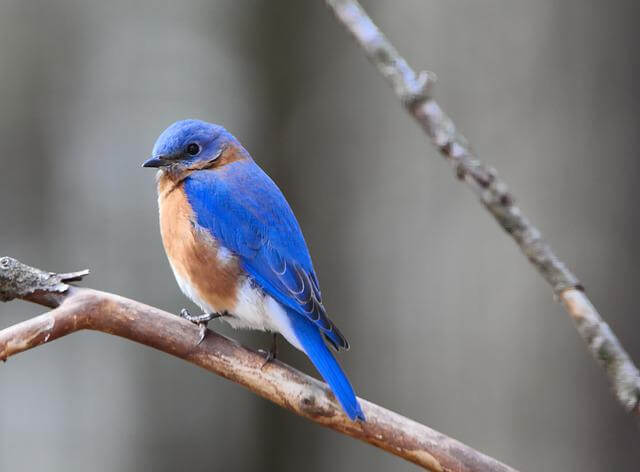
Frequently Asked Questions
How do I determine which bird repellent gel to use for my specific bird problem?
Choosing the right bird repellent gel requires considering several factors.
First, the type of bird causing the problem must be identified to ensure that the gel is effective against that species.
Additionally, the application technique must be carefully considered to ensure that the gel is applied correctly and in the appropriate areas.
Gel-based products must also be compared to other bird repellents, such as physical barriers or sound deterrents, to determine the best course of action.
Finally, it is important to consider the safety and environmental impact of the gel. Some gels may contain harmful chemicals or have negative effects on non-target species.
When applying the gel, it is important to follow all safety precautions to minimize any potential harm.
Overall, choosing the right bird repellent gel requires careful consideration of multiple factors to ensure its effectiveness and minimize any negative impacts.
Can I use multiple visual deterrents in one area to increase effectiveness?
As the adage goes, ‘two heads are better than one.’ Similarly, visual combinations of natural deterrents can be more effective in deterring birds from entering a barn. However, effectiveness may vary depending on bird behavior and the environment.
While visual deterrents such as reflective objects and bird scare tape may have a short-term impact, sound effectiveness can be enhanced by using predatory bird calls and ultrasonic devices.
It is important to note that the use of multiple deterrents can have an impact on the environment.
Therefore, it is recommended to choose the most appropriate and effective combination of deterrents to minimize environmental impact.
Is it possible to use ultrasonic devices in a barn with livestock present?
Ultrasonic devices are a popular bird control method due to their non-invasive nature and effectiveness in deterring birds from an area.
However, when considering the use of ultrasonic devices in a barn with livestock present, it is important to prioritize barn safety and livestock comfort.
While ultrasonic devices have shown to be efficient in bird behavior modification, it is crucial to consider the noise tolerance of the livestock and ensure that the devices do not cause any discomfort or distress.
Additionally, it is important to select the appropriate ultrasonic device for the specific bird species present in the barn.
Overall, the use of ultrasonic devices in a barn with livestock requires careful consideration and a thorough understanding of bird behavior and noise tolerance to ensure both effective bird control and animal welfare.
Are there any potential health risks to using physical traps for birds?
Potential health risks and ethical considerations should be taken into account when considering physical traps for birds as a means of keeping them out of a barn.
While traps can effectively capture birds, they can also cause injury or death if not handled properly. Additionally, the use of traps may not be a long-term solution as birds may learn to avoid them over time.
Safety precautions such as using live traps and baits that are safe for birds can help minimize harm.
Alternative methods such as visual deterrents, sound deterrents, and bird repellent gels can also be effective in keeping birds out of a barn without posing potential health risks or ethical concerns.
It is important to weigh the benefits and drawbacks of each method before making a decision.
How can I ensure that released birds are not harmed or injured after being captured in a live trap?
Bird release techniques require careful consideration of ethical and safety precautions to ensure minimal harm to the birds.
After being captured in a live trap, it is crucial to monitor the birds closely to ensure that they are not injured or traumatized.
Rehabilitation facilities may be necessary for birds that require medical attention or are not ready to be released back into the wild.
Before releasing the birds, it is essential to select an appropriate location that provides suitable habitat and food sources.
Additionally, it is crucial to ensure that the birds are not released near areas where they may be at risk of injury or harm.
Overall, proper bird release techniques involve a combination of careful planning, monitoring, and ethical considerations to ensure the well-being of the birds and their successful reintegration into their natural habitats.
Conclusion
In conclusion, preventing birds from entering and nesting in barns is essential for protecting crops, equipment, and livestock.
Physical barriers, such as bird netting and wire mesh, can be highly effective at keeping birds out. Visual and sound deterrents, such as bird scare tape and repellent gel, can also be useful.
Additionally, proper food and water management can help discourage birds from taking up residence in a barn.
However, physical traps, such as live traps and baits, should only be used as a last resort and with ethical considerations in mind. It is important to release captured birds in a safe and appropriate location.
As the saying goes, ‘an ounce of prevention is worth a pound of cure.’ Taking proactive measures to prevent birds from entering a barn can save time, money, and potential harm to livestock.
By using a combination of physical barriers, visual and sound deterrents, and proper management techniques, barn owners can protect their property and ensure the safety of their animals.

